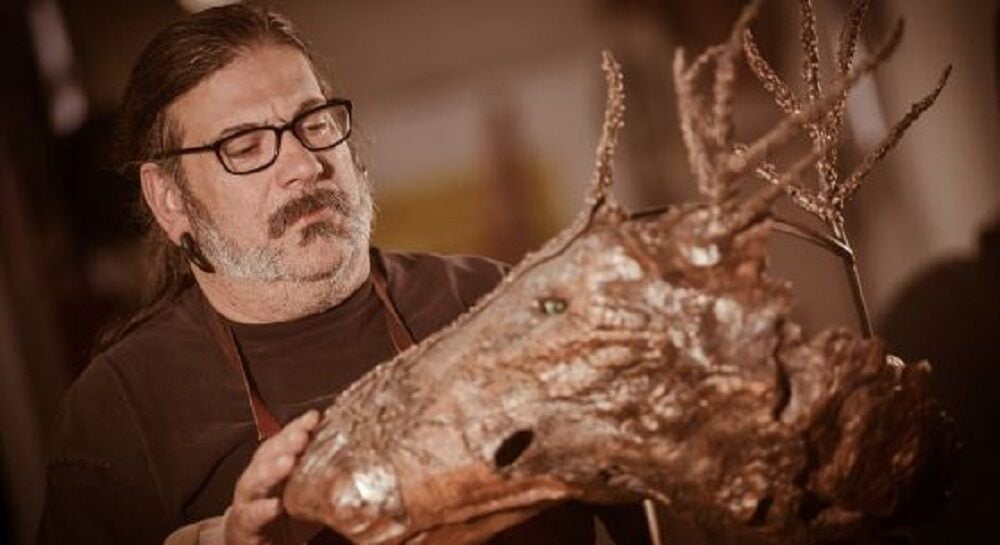Updated August 26, 2023
Metal sculptors are artists who craft sculptures out of different metals, such as bronze, steel, copper, and aluminum. To turn raw metal into works of art, they employ various techniques and equipment, including welding, cutting, bending, and shaping.
Metal sculptors typically utilize many processes and ideas, such as abstract forms, human figures, animals, or creations that draw inspiration from nature. They can perform as contractors or groups in a foundry or workshop.
Some metal sculptors experiment with cutting-edge tools and technology to produce unique and intricate works of art, while others work with more conventional methods and tools. All across the world, there are metal sculptures in public places, galleries, museums, and private collections.
What Do Metal Sculptors Do?
Metal is the primary material used by metal sculptors to create sculptures, which are three-dimensional works of art. These sculptures vary in size from those you can carry in your hand to those that may fill a whole public space. The following are some of the responsibilities that metal sculptors typically carry out:
Conceptualizing: Producing a concept or idea for a sculpture is a common first step for sculptors. It may include creating models or sketching in various materials to test numerous designs.
Selecting materials: A metal carver will choose the kind of metal they want to work with, having a clear vision in mind and considering its durability, malleability, and other features.
Preparing the metal: Sculptors generally have to clean, cut and join metal parts before they can begin sculpting them. To improve the shape of the metal, they might also use instruments like hammers, chisels, and grinders.
Shaping and forming the metal: Metal sculptors will shape the metal into the desired form using a variety of methods, such as hammering, bending, and welding. It can include giving the metal’s surface different textures and patterns.
Finishing and polishing: To give the metal’s surface a uniform and smooth appearance, metal sculptors frequently polish and refine it after finishing the sculpture. They might also add coatings or finishes to the metal to protect it and improve its appearance.
Installation: Metal sculptors may be in command of installing the sculpture alone or working with a team to make sure it is situated in its exact location safely and securely, depending on its size and location.
How to Become a Metal Sculptor?
Typically, you will require a combination of artistic talent, technical skills, and knowledge of metalworking techniques to work as a metal sculptor. To become a metal sculptor, you can follow these steps:
Develop your artistic skills: Develop your artistic skills by practicing drawing, painting, and other visual arts, enrolling in art schools or seminars and learning new techniques.
Understand metalworking techniques: Gain knowledge of how to weld, cut, bend, and shape metal, as well as other machinery and techniques utilized in the industry.
Gain experience: Discover opportunities to perform with metalworking equipment by participating in classes, registering for an apprenticeship, or volunteering in foundries or studios that use them.
Create a portfolio: Begin collecting your metal sculptures and other art pieces. Your portfolio should reflect your artistic flair, technical proficiency, and metalworking expertise.
Exhibit your work: Enter contests, participate in art events, and approach galleries and museums to exhibit your work and get exposure.
Continue learning and improving: Attend workshops, look for mentorship, and learn about cutting-edge metal sculpting methods and equipment.
Required Skills to Become Metal Sculptors
Artistic ability: Metal carvers must have a strong imagination and artistic talent to create and design sculptures.
Knowledge of metalworking tools and techniques: Metal designers must be proficient with a wide range of metalworking instruments and methods, such as cutting, welding, bending, and sculpting metal.
Technical expertise: As metal sculptors, they must have a comprehensive knowledge of the characteristics of various metals and how to work with them to produce sculptures.
Attention to detail: Metal carvers need exceptional attention to detail and the willingness to concentrate on minute details of their work.
Problem-solving skills: Metal carvers frequently encounter issues while developing their artworks; thus, they must be able to troubleshoot and come up with solutions.
Physical dexterity: Physical skill and the capacity to use heavy machinery and tools for extended periods are requirements for a metal designer to carry out their tasks.
Patience and persistence: Metal sculpture is a labor-intensive and frequently complex procedure; thus, metal sculptors must have the perseverance and patience to see their work through to completion.
Business skills: Metal sculptors who perform as self-contractor need business skills, such as marketing, networking, and financial administration, to manage their careers.
Salary of Metal Sculptors in India
India’s average gross pay for sculptors is 7,36,671, or ₹354 per hour. They also receive an average bonus of 19,595. The sculptor (with 1-3 years of experience) can expect to make up to an average of ₹5,51,719. The average compensation for a senior-level sculptor (8+ years of experience) is ₹9,11,669.
